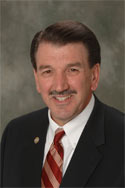Students borrow too much. What’s worse, the institutions they borrow too much to attend, borrow too much. A ferocious cycle is created: endlessly optimistic and apparently never satisfied.
“Do not accustom yourself to consider debt only as an inconvenience; you will find it a calamity.”
— Samuel Johnson —
_________________________________________________
By Walter Wendler
The higher education debt bubble is bursting at both ends. According to a Josh Freedman post on Forbes last week, “The Hidden College Problem: When Universities, Not Just Students, Take On Debt,” the challenges are present at many universities. Debt is taken on for projects tangential to educational purpose. U.C. Berkeley has racked up a $.5 billion tab for a renovated football stadium.
CAL borrowed so much to keep up with the Joneses that the Moody’s General Revenue Bonds rating for the University of California juggernaut sank from Aa1 to Aa2. Berkeley may be the best public university in the world, but its adoption of the “mine-is-bigger-than yours” model of academic excellence is shortsighted and out of character. It’s not an anomaly unfortunately, but an endemic ailment affecting higher education institutions of every stripe.
Eva Bogaty, Moody’s Vice President, is wary at best. “Although higher education institutions have shown willingness and ability to adapt to weak economic conditions, the uncertain funding and regulatory environments will overshadow the sector’s strengths in the near term.” Bogaty does not mention demographic changes and the falling numbers of college-ready high school graduates. And these are not the unemployed single mothers of two, or laid-off dads, who come back to school to earn a degree with marketability to make ends meet, and who care little about football and fancy dining halls. These determined students understand purpose as did Russell Crowe’s Jim Braddock in Cinderella Man when he proclaimed he was “fight[ing] for milk.”
Students have swallowed a trillion dollars in debt. They’re gagging. The campus debt problem, created in part by emaciated universities competing for students packing subsidized loans is unsustainable. Universities should right the fiscal ship based on mission, not maybes.
John Rockefeller’s University of Chicago rate of gobbling up debt tops the elite private school list. According to a Michael McDonald and Brian Chappatta post in Bloomberg last week, the University is “… in the midst of a $1.7 billion development plan. The plan prompted S&P and Moody’s Investors Service to cut the school’s credit outlook to negative. Chicago already has $3.6 billion of debt — the most relative to its endowment among the richest U.S. schools.”
The debt would make Mr. Rockefeller, the famously generous but simultaneously meticulously calculating penny-pincher, cry in his crude.
And not just the state flagships or prestigious privates are taking on water. According to Freedman other universities are awash in questionable paper, “…schools like The College of New Jersey are stuck paying a large portion of their revenue (TCNJ paid 7.2% in 2012) in interest payments with few other options.” These may be the “underwater mortgages” of the mid twenty-first century.
Monetary machinations hidden in the labyrinths of fiscal gamesmanship allow leaders to hide tuition and fee increases, deflecting attention from essential educational costs. Education costs have increased to be sure, but not as dramatically as the cost of curb appeal. Football, five-star dining, and other expensive accoutrements are lustrous losers for too many universities, and the seers of credit worthiness know it. The child’s rejoinder “everybody’s doin’ it” won’t float much longer.
Distance education as the salvation from wanton expense for the gratuitous trappings of the “Great Gatsby,” or the ludicrous indifference to purpose of “Animal House,” are delusions. Distance education offerings are being used to subsidize increasing costs of campus attendance escalated by non-instructional expenditures. Masqueraded as an elixir, such obfuscation and shortsightedness is a disaster akin to the Titanic’s iceberg.
The increasing indebtedness is sinking schools; the undertow drowning students. An unwillingness to focus on academic intention is choking the life out of U.S. higher education. It is a slow moving malady rather than a runaway freight train. The latter would draw more appropriate attention and concern. The former allows the can to be kicked down the road. The pension systems in too many states serve as a bellwether. And the similarities to the foul lending practices through an asleep-at-the-switch-not-my-fault home mortgage industry and its regulators provide uncanny — even frightening — parallel universes.
Our universities should be attentive to purpose and hold academic pursuits above all else, no matter how much money they can borrow.




